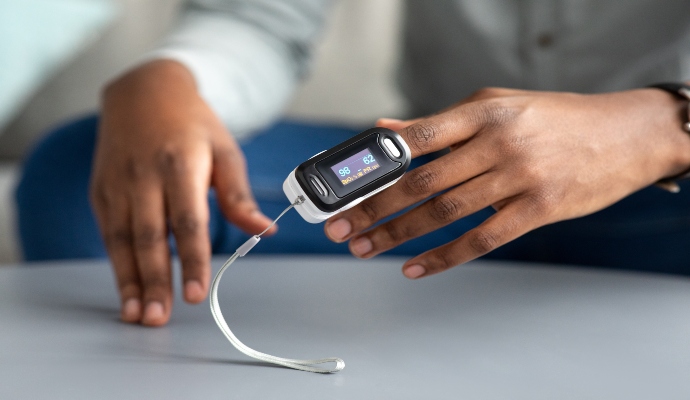State AGs Urge FDA Action on Race-Related Pulse Oximeter Inaccuracies
In a letter, state AGs highlighted research showing that pulse oximeter readings are often inaccurate for populations of color, urging the FDA to take action.

Source: Getty Images
- A group of state attorneys general (AGs) has sent a letter to the United States Food and Drug Administration (FDA) urging the agency to address the issue of pulse oximeter inaccuracies when used on people with darker skin tones.
AGs from 25 states, including California, Arizona, Colorado, Utah, Michigan, and Ohio, noted in the letter that it has been one year since the FDA convened a public meeting to address concerns about race and color bias associated with pulse oximeter use. However, since then, these devices have continued to be sold without clear label warnings or guidance to protect people with darker skin tones.
The letter states that numerous studies show pulse oximeters provide inaccurate blood oxygen level readings for people with darker skin tones.
One study published in 2022 revealed that Black patients had higher odds of having occult hypoxemia, or low blood oxygen saturation levels, as measured by arterial blood oxygen saturation but not detected by pulse oximetry compared to White patients.
Similarly, research published earlier this year shows that pulse oximetry overestimated arterial oxygen saturation in Black children. The researchers concluded that the light absorption properties of melanin likely caused this, as Black patients have darker skin with higher melanin levels compared to White patients.
The inaccuracy in pulse oximetry readings resulted in patients from minority groups being less likely to be deemed eligible for COVID-19 treatment. According to a study published in June 2022, pulse oximetry readings overestimated oxygen levels in arterial blood by an average of 1.7 percent among Asian, 1.2 percent among Black, and 1.1 percent among Hispanic patients compared with White patients.
As a result, Black and Hispanic patients were less likely to be recognized as eligible for COVID-19 treatment compared with White patients. Of the 451 patients who did not have their treatment eligibility recognized at all during the study, 54.8 percent were Black and 27.1 percent Hispanic.
“It is imperative that the FDA act now to prevent additional severe illness and mortalities among darker skinned people resulting from inaccurate or misleading pulse oximeter readings as well as inadequate diagnostic and treatment protocols and procedures,” the AGs’ letter states. “This is particularly critical as the nation moves from a declared coronavirus public health emergency to a still-dangerous endemic phase.”
The AGs listed six actions the FDA could take to address the issue, including requiring pulse oximeter manufacturers and vendors to provide clear, evidence-based warning labels about the reduced effectiveness of prescription and over-the-counter pulse oximeter devices for those with darker skin tones and issuing a letter to healthcare providers about the risks and reduced efficacy of pulse oximeters for dark-skinned patients.
Further, the AGs ask the FDA to finalize regulations requiring that clinical trials for approved medical devices like pulse oximeters be demographically representative.
The letter emphasizes that the agency should support research to provide “better calibration of existing pulse oximeter devices, and/or development of new tools that work accurately and equitably across a diversity of skin tones.”
“In this moment, our country faces multiple epidemiological and other public health, safety, and national security threats,” the letter concludes. “The accuracy of diagnostic devices to ensure timely and potentially lifesaving access to healthcare should not be one of them.”
Pulse oximeters became widely used during the COVID-19 pandemic. However, in addition to racial inaccuracies, research has indicated they may not have offered added benefits for COVID-19-related remote patient monitoring (RPM).
Published in the New England Journal of Medicine last year, the study included over 2,000 COVID-19 patients enrolled in an at-home monitoring program between November 29, 2020, and February 5, 2021. Researchers compared data among those who received standard care to those who received care that included pulse oximeter use.
Patients who used pulse oximeters had an average of 29.4 days out of the hospital, and patients who did not had an average of 29.5 days.
